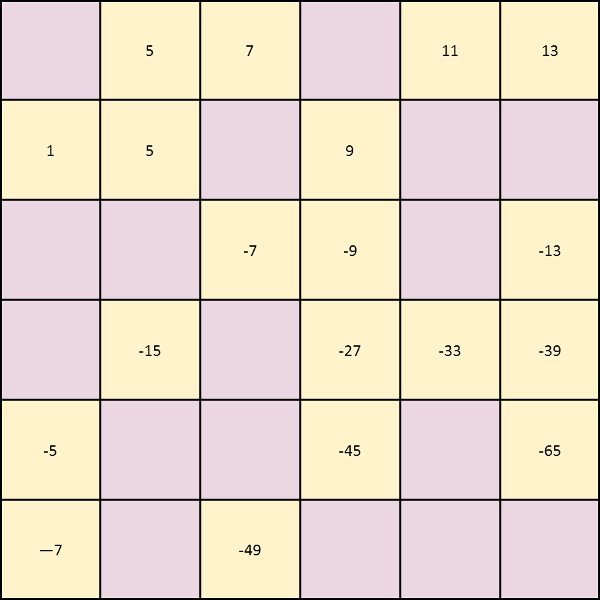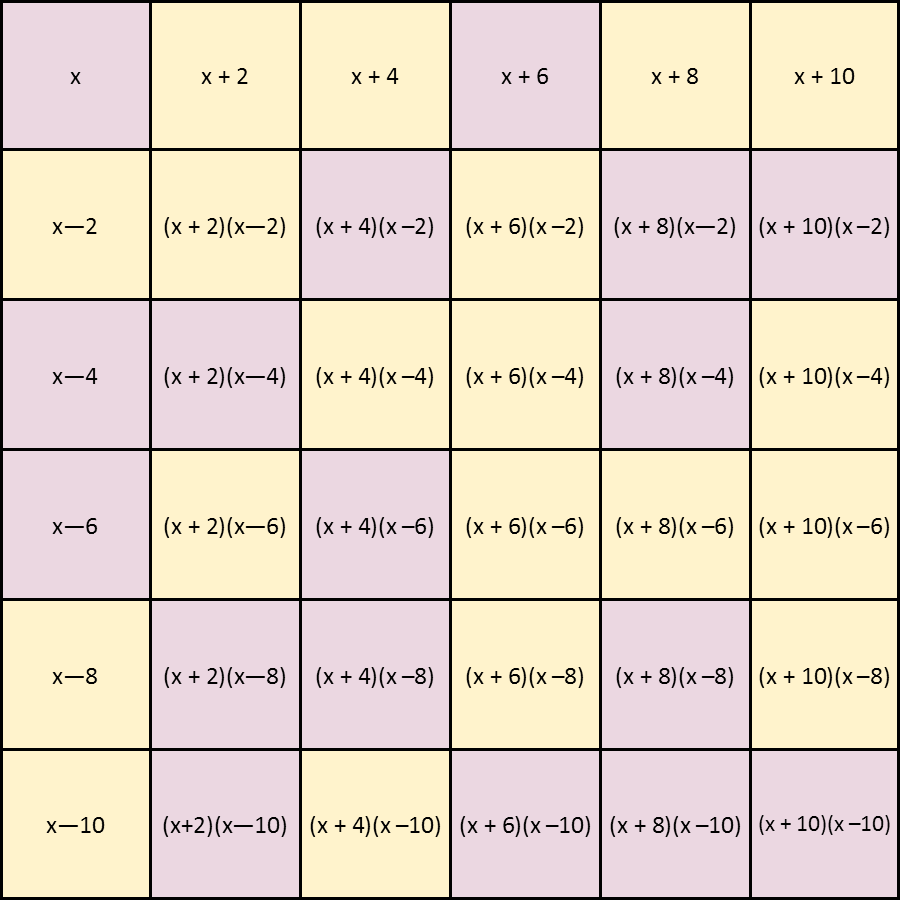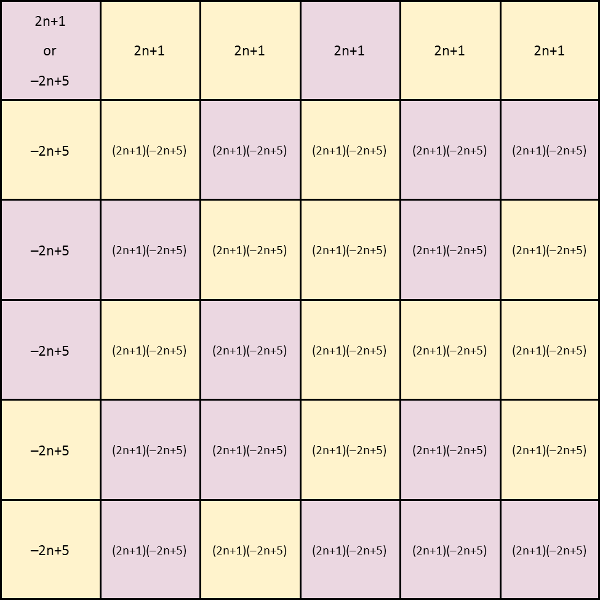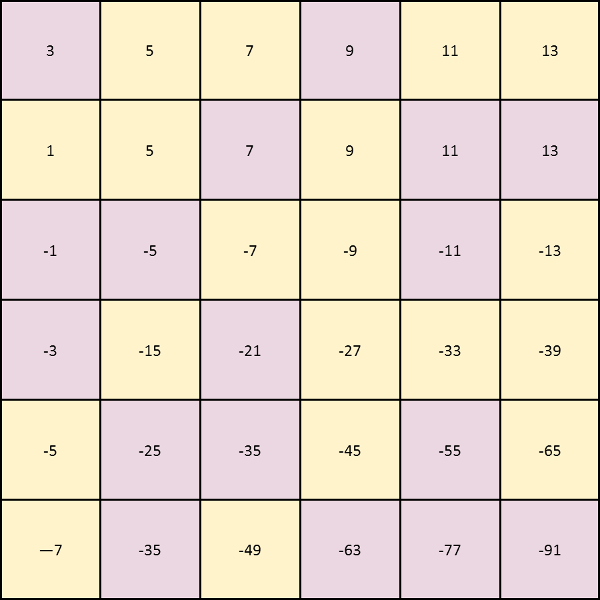Math Made Easy: Problem of the Day 34
For today, I present a number puzzle. Itís kind of like Sudoku, only instead of being restricted to using the numbers 1-9 in various houses, you have to find the underlying pattern and fill in the numbers that meet the pattern. Can you solve it?

There are lots of ways to solve these. Some by intuition, some by trial and error. A good way to try, is to treat it as a problem of sequences. Letís start by assigning the upper left corner a variable x. Then we can try to see a relationship between each of the cells to come up with expressions for them. Going across the top row, I see that 7 is 2 bigger than five, and 13 is also 2 bigger than 11. So Iíll use the series 2n+1 to label the top row (which works nicely Ė for the second cell 2x2+1=5, for the third 2x3+1=7). That series also tells me the very first cell SHOULD be 3 (2x1+1=3). From that, in the first column, and going down, I see that 1 is two less than my predicted 3, and down at the bottom, -7 is also 2 less than -5. So I have a nice arithmetic series going down the first column, too, though it isnít quite the same as the one along the top row. Letís see. If I make the first series negative, and then add six to that, I get: -(2n+1)+6 = -2n+5. And that works: -2x1+5=3, -2x2+5=-1, etc, producing the numbers I both predict for the first cell and see as we go down the column.
But now to tackle the other cells. Thereís probably a pattern. The second row looks like the same series as the first row, but one should doubt thatís how the row is found, because it wouldnít make a nice pattern with all the other rows, so letís look at another row. Our best hints are in the 5th cell of the 4th row and the 3rd cell of the last row. Both those cells seem to be the product of the first cell in their column and row: -5x13=-65 and -7x7 = -49.
Now Iím going to fill out a table using expressions I derive from the rules Iíve found, and here are the three rules Iíve determined for this puzzle:
1) For the first row, I start with the variable x, and each succeeding x is defined by the series 2n+1. For x=3, this results in x, x+2, x+4, etc.
2) For the first column, I start with the variable x, and each succeeding is defined by the series -2n+5. I realize that, when x=3, this results in x, x-2, x-4, etc.
3) All the remaining cells are the results of the products of the first cell of their respective columns and rows, resulting in expressions (x+2)(x-2), (x+4)(x-2), etc.
And hereís the resulting table:

I also could have just made a table using the rules with the series I found. The only difference are in rules one and two. Itís not quite as obvious for filling in, which is why I converted to the expressions I proposed for the first table. It would look like this:

I then plug in the numbers I know and calculate the remaining ones using the expressions I found, checking my work as I go to make sure Iím correct. And it turns out, that worked! Itís not the only way to solve these. The main point of these types of puzzles, as with most puzzles, is to have fun while working your brain. I hope you enjoyed it!

|



